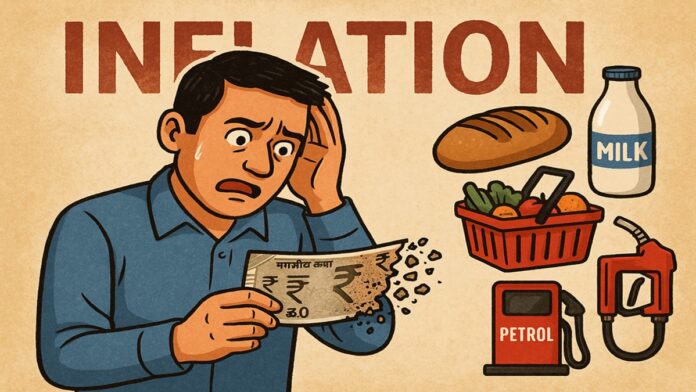Most of us make a mistake when planning for retirement – underestimating the impact of inflation. We think that the amount we are saving today will be enough to meet our needs after retirement. But the reality is that inflation reduces the purchasing power of money year after year.
Today, we will understand this through the story of a 30-year-old man who currently earns Rs 1 lakh per month and wants to retire at the age of 60 and maintain the same lifestyle that he is living today. But how much money will be needed to meet his current needs after 30 years? And how to raise that amount? This is the crux of this story.
ALSO READTCS Layoffs: Is Your Job Secure? Your Step-by-Step Guide to Building an Emergency Fund How much will Rs 1 lakh be worth in 30 years?
Assume that inflation remains at an average of 6% for the next 30 years. This is not an imaginary figure — the average inflation rate in India has been around this much in the last two decades. So, to maintain the purchasing power of Rs 1 lakh today, he will need around Rs 5.75 lakh every month after 30 years.
This means that his ‘target’ at the time of retirement is not just to meet monthly expenses, but also to fight inflation.
How will expenses increase over time?
Today this person is spending Rs 1 lakh a month on rent, groceries, weekend outings and other household needs. He doesn’t have a child right now, but in the coming years, expenses will increase due to having a child, school fees, medical expenses, family responsibilities and inflation.
He expects his salary to increase by an average of 10–12% every year, which will help manage these rising expenses. But the situation changes after retirement — no salary income but expenses remain the same or grow further. This is why it is important to make a solid plan from now on. After retirement, the person needs a pension of Rs 5.75 lakh.
If this person wants to get Rs 5.75 lakh every month for the next 15 years (i.e. till the age of 75) after retiring at the age of 60, then he should have a large amount by the time of retirement.
» Read More


